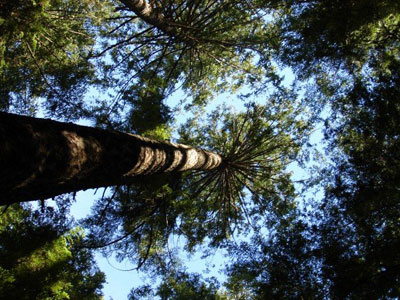All Nonfiction
- Bullying
- Books
- Academic
- Author Interviews
- Celebrity interviews
- College Articles
- College Essays
- Educator of the Year
- Heroes
- Interviews
- Memoir
- Personal Experience
- Sports
- Travel & Culture
All Opinions
- Bullying
- Current Events / Politics
- Discrimination
- Drugs / Alcohol / Smoking
- Entertainment / Celebrities
- Environment
- Love / Relationships
- Movies / Music / TV
- Pop Culture / Trends
- School / College
- Social Issues / Civics
- Spirituality / Religion
- Sports / Hobbies
All Hot Topics
- Bullying
- Community Service
- Environment
- Health
- Letters to the Editor
- Pride & Prejudice
- What Matters
- Back
Summer Guide
- Program Links
- Program Reviews
- Back
College Guide
- College Links
- College Reviews
- College Essays
- College Articles
- Back
The Chipko Movement
Tree Hugger
sometimes disparaging : environmentalist 2; especially : an advocate for the preservation of woodlands.
I’m quite familiar with the term tree hugger. It comes up quite a bit in the environmental books I read. For some it is a source of pride, for others - of ridicule. Some definitions refer to tree huggers as other - enthusiastic environmentalists. But it’s figurative. Or so I thought until I read about the Chipko movement.
Chipko literally means embrace. It is a non – violent movement which started off dedicated to preserving the forests of India, and expanded to include other ecological concerns.
The Chipko movement started 260 years ago in the 18th century. The Bishnoi people were a proud tribe, spread over many villages. The watched the destruction of the forests with horror, shaking their heads at the setting in of erosion. One day the maharajah sent his people to cut down the trees on Bishnoi land. The Bishnoi villagers took a stand. And they fell. The slaughter so affected the maharaja that he issued a royal decree stating that no trees would be cut down on Bishnoi land.
Fast forward to the 1970’s. Location: the hills of northern India. The Indian government was going to allow a sports company to cut down ash trees. The village women arose. There was a standoff between the women and the company workers, and the sports company backed off.
Then there was to be an auction for 2,500 trees, near the Reni village. Waves of protest erupted.
The men of Reni were diverted to a non – existent compensation site, while the lumber people went for the trees. The women got word of it. 28 of them hurried to the trees, and resorted to hugging them to protect them from the axes. Literal tree huggers. They kept vigil. And thus, the movement grew.
A unique characteristic of the Chipko movement is the prominence of women in it. Women form the backbone of the movement, despite the growing number of male members. A factor in this is because village women are more tied through the forests through the hierarchy of the villages. Men tend the crops while the women gather firewood and such in the forest. That being the case or not, the Chipko movement is recognized as an achievement of woman power, and, on the greater scale - people power.
The Chipko movement seeks to encourage the rational use of forest resources, instead of the greedy, wasteful practices still much in play today. It has also turned its attention to other problems such as water management, recycling, and energy conservation. One of their most popular and widespread slogans is ‘What do forests bear? Soil, water and pure air.’
What can I say? I want to be a tree hugger.

Similar Articles
JOIN THE DISCUSSION
This article has 0 comments.
